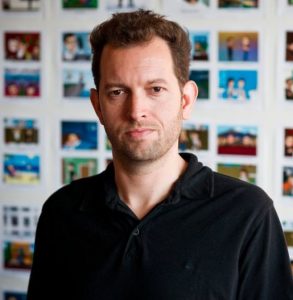Mona Ataya : The Woman Who Revamped a Mother’s World And her Babies
What is the toughest job on the planet? If you ask me, I would say a mother’s job is the toughest that stands today. Bringing up a human with qualities and personality is certainly difficult. Besides, every mother in the world wants the best for her little devil, be it outfits, education or anything else.
Shopping for kids is enervating these days. Considering the prices and the choices in the market, it is very difficult to pick out the best, for your little one. One has to look for the quality, the pricing and the service that is being provided to them. Well, put these three together, and you’ve got Mumzworld.
Mumzworld is an online site for baby shopping. Yes! A whole internet site that caters only baby needs. And the mastermind behind this, Mona Ataya, shares an inspiring story out with the world.

Mona, the CEO and founder of Mumzworld, launched the startup site after taking into account the daily troubles and needs of mothers, that were being ignored by the market. She stepped up and launched the site, which is now the 1st and the largest online shopping site in the Middle East for mothers and their babies.
Mumzworld services in countries like UAE, Saudi Arabia, Qatar, Kuwait, Oman, Jordan, Lebanon, and ships their products all over the world. Mumzworld has got everything related to babies and children. From diapers to clothes, feeding to toys, bathing needs to books and what not! It has also got a wide range of more than 1600 brands with big names such as Lego, Pampers, Fischer Price and Johnson&Johnson. Mumzworld promises the best price guarantee, free speedy delivery, easy returns and flexible payment options.
“A baby is the light of a mother’s eyes, and we at Mumzworld understand that every mum wants the best for her precious angel. In a remarkable breakthrough in online baby shopping, we present before you the most extensive range of baby and kids products that you could find in one place,” says the official site.
Mona started her career at Procter and Gamble (P&G) in the USA. Working there, she was involved in the soap sector. Then, after some time, she moved back to the Middle East and joined Johnson&Johnson. During her work period at Johnson’s, she launched many brands like Greiter Skin Care, ph5.5, Clean and Clear, and also, Johnson’s Suncare. She also relaunched some of the brands like Suncare and Piz Buin in Europe. In 2000, she left Johnson&Johnson and teamed up with her brother Rabea Ataya and co-founded Bayt (bayt.com), which today, is the leading job site in the Middle East and provides services all over the world to help people find the perfect jobs for them.
After becoming a mother to three boys, she turned to a full-time mother job. But this period brought difficulties for her. Soon, she began to discover gaps in the market, which could not satisfy the needs of a mother for her baby. But she wanted to tear down this inconvenience. So, in 2011 she came up with her 2nd startup, Mumzworld. She wanted to revolutionize the way mothers shop for their babies. Mumzworld had every indispensable for the need of a mother, which was also cost-effective. Since then, the site has been growing at a rapid pace. The site won many awards like ‘Small Business of The Year (2013)’, ‘Most Admired Online Retailer (2014)’, and ‘Customer Service Excellence Award’.
Mona, too, won many awards. She was listed in the ‘100 Most Powerful Arab Women’ in 2014 and 2015. She also got mentioned in ‘100 Most Powerful Arabs, next generation’.
“Endeavors have been fantastic. It has allowed us to meet and get support from super-super smart minds” quoted Mona, when enquired about the network of startups and businesses. She tips for new entrepreneurs, that in business world one has to keep on going and fundamentally believe their vision and what they are trying to achieve. ‘Being an entrepreneur is more of a mindset’ she says.
Mona says that her vision was and is to create a necessary online extension to a mother’s world. Mumzworld also keeps on enrolling itself into social initiatives, like giving out free meal vouchers and providing impoverished mothers with baby essentials.
She shares her daily routine as a typical work mom. Starting from taking her kids to school, then working in her office until her kids get free from school, and then ending it by putting all her kids to sleep by herself. She refers that the hardest job is of a full-time mother, and also that this fact cannot be denied. When asked about her inspiration, she said that her challenges were her inspirations alongside her children. Her challenges gave her the ultimate idea for success.
So, the CEO and founder of Mumzworld, Mona Ataya clearly gives us the light that even the hardships and challenges in our day-to-day life can leave life-changing impressions on us which leads our pathway to success. Mona undoubtedly is a role model and a great mentor to be followed.

Raghav is a student and a content writer. He loves to write about emerging as well as the existing technologies around and about the ones who bring them to you. Music is the other passion that Raghav processes. It is like the fuel to his body. He is also in writing songs and poems. He believes that life is short, so live the best out of what you have got. Raghav considers himself a sci-fi guy, having stories and tech all around in his head, all the time.





